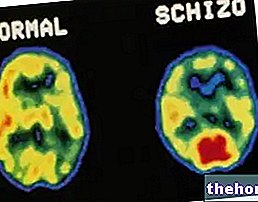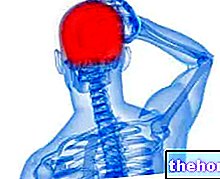Generality
Migraine is a common form of primary headache, characterized by great clinical variability and secondary to multiple triggers. The pain is localized on one side of the head, typically in the anterior or lateral, but can also be bilateral or spread progressively.

Diagnosis
The first approach to formulating the diagnosis of migraine is based on the analysis of the symptoms reported by the patient. The person is asked to describe the intensity and location of the pain, the frequency of attacks and any disturbances felt before or during the painful crisis. The doctor may ask the patient if the headache:
- It presents with a throbbing pain of moderate or severe intensity, such as to prevent the carrying out of normal daily activities;
- Affects one side of the head (one-sided localization);
- It is aggravated by physical activity or movement;
- It is accompanied by nausea and / or vomiting and increased sensitivity to light (photophobia) and / or noise (phonophobia).
The information collected makes it possible to recognize the type of headache, the way it manifests itself and its recurrence (isolated, episodic or chronic). To help the doctor identify any triggering factors, it may be useful to keep a "headache diary", where to record the details that characterize migraine attacks: time references (date and time), description of pain (type, location, intensity , duration and frequency), any medications taken, foods consumed, activities carried out before its appearance, etc. The compilation of this register can be useful both for monitoring the progress of migraine attacks and for determining the effectiveness of any therapeutic approach undertaken.
In addition to the medical history, it is essential to complete the evaluation with the physical examination, which allows the doctor to investigate the causes and triggers of the migraine.
The visit consists in checking some physical and neurological parameters, such as:
- Blood pressure and heart rate;
- Abnormalities in breathing, nausea, vomiting and fever;
- Examination of the cervical muscles and the temporomandibular joint;
- Motor, sensory, brain, cognitive functions and visual acuity.
In particular, neurological tests focus on the exclusion of other pathological conditions, which may be at the basis of the onset of migraine. For this purpose, only if there is suspicion of a secondary type, the doctor can refer the patient to some diagnostic investigations, such as computed tomography (CT), brain magnetic resonance and electroencephalogram (especially in children). Further diagnostic tests may also include blood tests, x-rays of the cervical spine, lumbar puncture, Doppler ultrasound and complete eye examination.
The patient should undergo urgently under medical supervision in the event that:
- The pain in the head is very intense and comes on suddenly (within a minute or two);
- Migraine attacks occur more frequently;
- A severe headache with fever occurs or other manifestations arise that do not usually accompany the migraine.
Differential diagnosis. The main conditions that can cause symptoms similar to a migraine attack are:
- Stroke and subarachnoid haemorrhage: they occur with a very fast onset headache;
- Cluster headache: pain, typically unilateral, occurs periodically, but differs in the shorter duration of the attacks and the appearance of characteristic symptoms, such as pain around the eye sockets, nasal congestion and tearing;
- Tension headache: generally, it is bilateral and less disabling than migraine;
- Acute glaucoma: it is associated with vision problems;
- Meningitis - manifests itself with fever;
- Temporal arteritis: tends to occur in people over the age of 50 and, unlike migraines, the ESR (erythrocyte sedimentation rate) is altered;
- Sinusitis: some typical manifestations, such as fever and rhinorrhea, differentiate it from migraine.
Other articles on "Migraine: Diagnosis"
- Stages of Migraine and Causes of Migraine
- Migraine: Definition and Symptoms
- Migraine: Care and Treatment




























